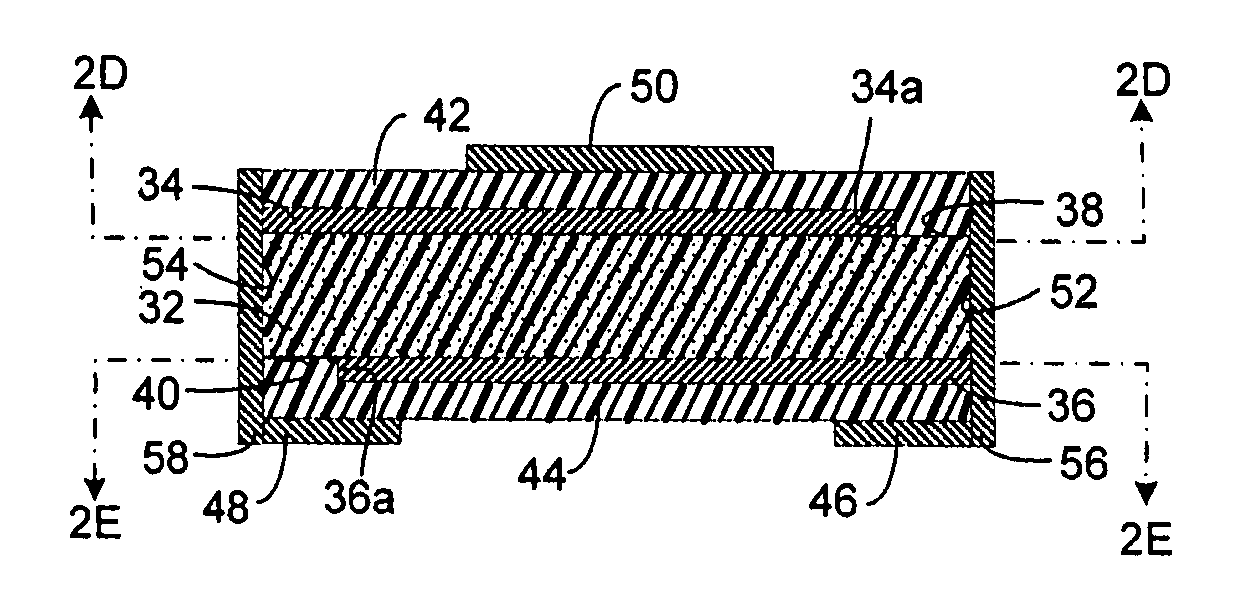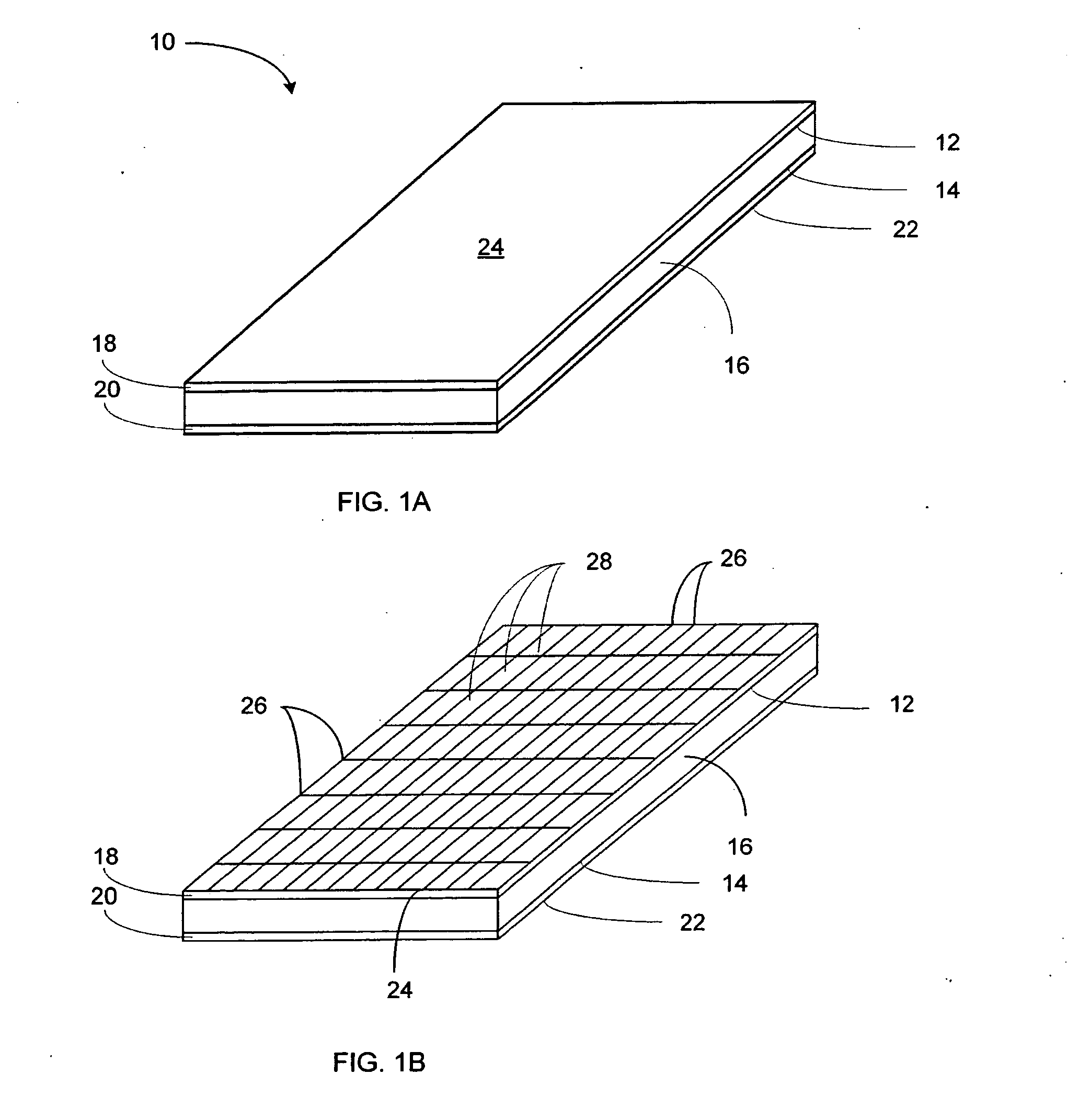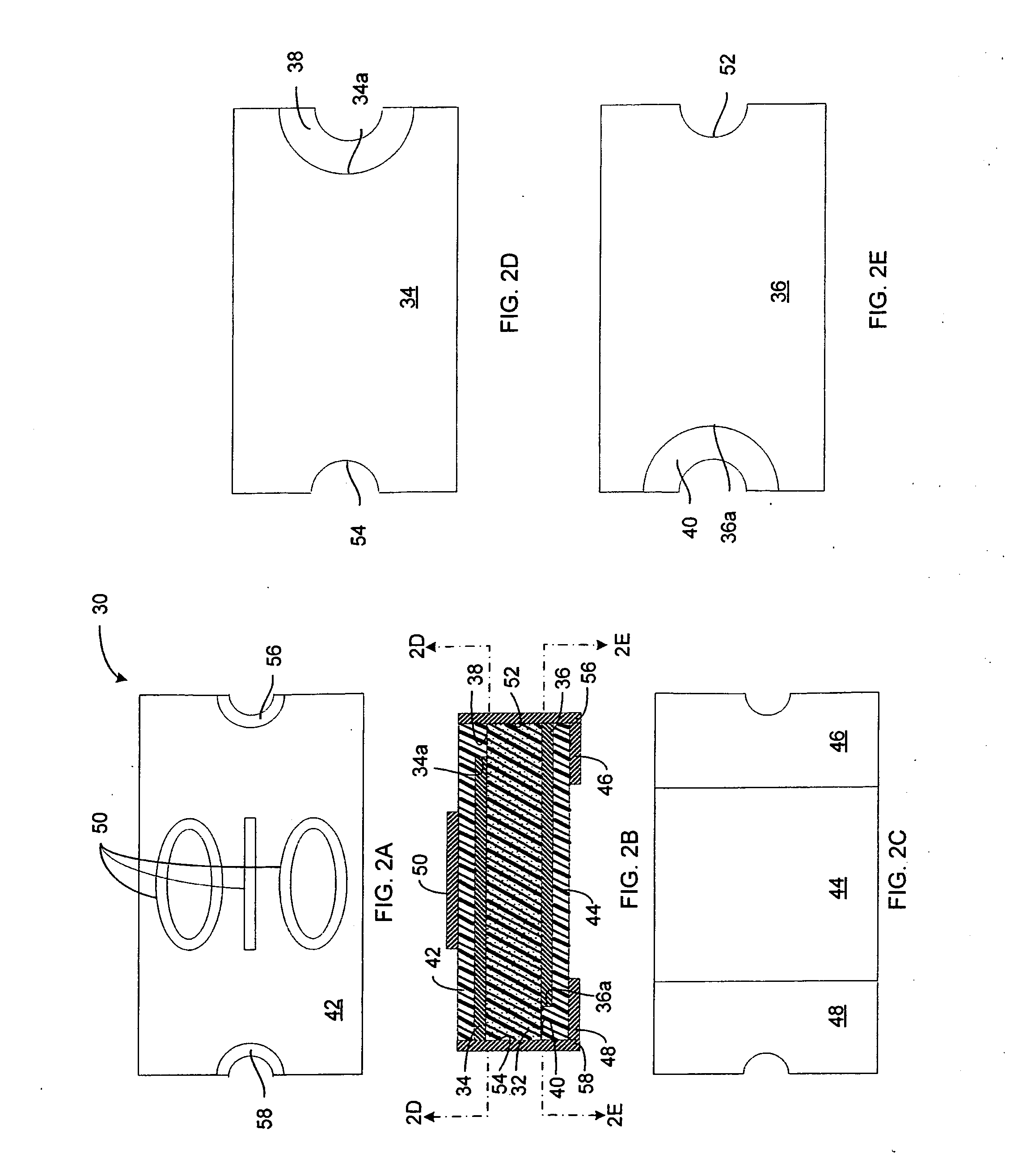Conductive polymer electronic devices with surface mountable configuration and methods for manufacturing same
a technology of conductive polymer electronic components and configurations, applied in the direction of resistor details, conductive pattern formation, thick film resistors, etc., can solve the problems of metal elements imposing physical constraints, poor resistance stability of typical prior art conductive polymer ptc devices, and inability to manufactur
- Summary
- Abstract
- Description
- Claims
- Application Information
AI Technical Summary
Benefits of technology
Problems solved by technology
Method used
Image
Examples
first embodiment
[0053]FIGS. 2A, 2B, 2C, 2D, and 2E illustrate a conductive polymer device 30, in accordance with the present invention. The device 30 includes a single active layer 32 of conductive polymer material, laminated between an upper metal foil electrode 34 and a lower foil electrode 36. First and second pluralities of through-hole via locations are defined in the sheet structure 10 (FIG. 1A). Each via location in the first plurality is separated from a corresponding via location in the second plurality by a pre-defined distance that corresponds to the length of a single device 30. An arcuate area of the upper electrode 34 adjacent each of the first via locations is removed (e.g. by conventional photo-resist masking and etching) to create an upper isolation area 38 at a first end of the upper electrode 34. Similarly, an arcuate area of the lower electrode 36 adjacent each of the second via locations is removed to create a lower isolation area 40 at the opposite end of the second electrode ...
second embodiment
[0062]FIGS. 4A, 4B, and 4C illustrate a conductive polymer device 130, in accordance with the invention. The device 130 includes a single active layer 132 of conductive polymer material, laminated between an upper metal foil electrode 134 and a lower foil electrode 136. The device 130 is similar to the device 30, described above and illustrated in FIGS. 2A through, 2E, except that the upper electrode 134 is formed (by photo-resist masking and etching) with an upper isolation area 138 in the form of a narrow lateral band or strip that is spaced from a first end of the device 130 by a narrow upper residual foil area 139. Similarly, the lower electrode 136 is likewise formed with a lower isolation area 140 in the form of a narrow lateral band or strip that is spaced from the second end of the device 130 by a narrow lower residual foil area 141. A top insulation layer 142 is applied or formed over the upper electrode 134 and the upper residual foil area 139, filling in the upper isolati...
third embodiment
[0073]FIGS. 7A, 7B, and 7C illustrate a multiple active layer device 270 that is a variant of FIGS. 6A-6C, wherein the multiple active layer device 270 comprises at least a first active layer 272a and a second active layer 272b, of conductive polymer material, connected in parallel, and arranged in a vertically-stacked configuration with only a single pair of surface-mount terminals. The first active layer 272a is laminated between first and second metal foil electrodes 274a, 274b in a first laminated sheet structure, and the second active layer 276b is laminated between fifth and fourth metal foil electrodes 274c, 274d in a second laminated sheet structure, each of the sheet structures being of the type described above and shown in FIGS. 1A and 1B. The first and second pluralities of via locations are defined as described above. The first or upper electrode 274a is formed (by photo-resist masking and etching) with an arcuate upper isolation area 276a between the first electrode 274...
PUM
| Property | Measurement | Unit |
|---|---|---|
| thickness | aaaaa | aaaaa |
| thickness | aaaaa | aaaaa |
| thickness | aaaaa | aaaaa |
Abstract
Description
Claims
Application Information
 Login to View More
Login to View More - R&D
- Intellectual Property
- Life Sciences
- Materials
- Tech Scout
- Unparalleled Data Quality
- Higher Quality Content
- 60% Fewer Hallucinations
Browse by: Latest US Patents, China's latest patents, Technical Efficacy Thesaurus, Application Domain, Technology Topic, Popular Technical Reports.
© 2025 PatSnap. All rights reserved.Legal|Privacy policy|Modern Slavery Act Transparency Statement|Sitemap|About US| Contact US: help@patsnap.com



